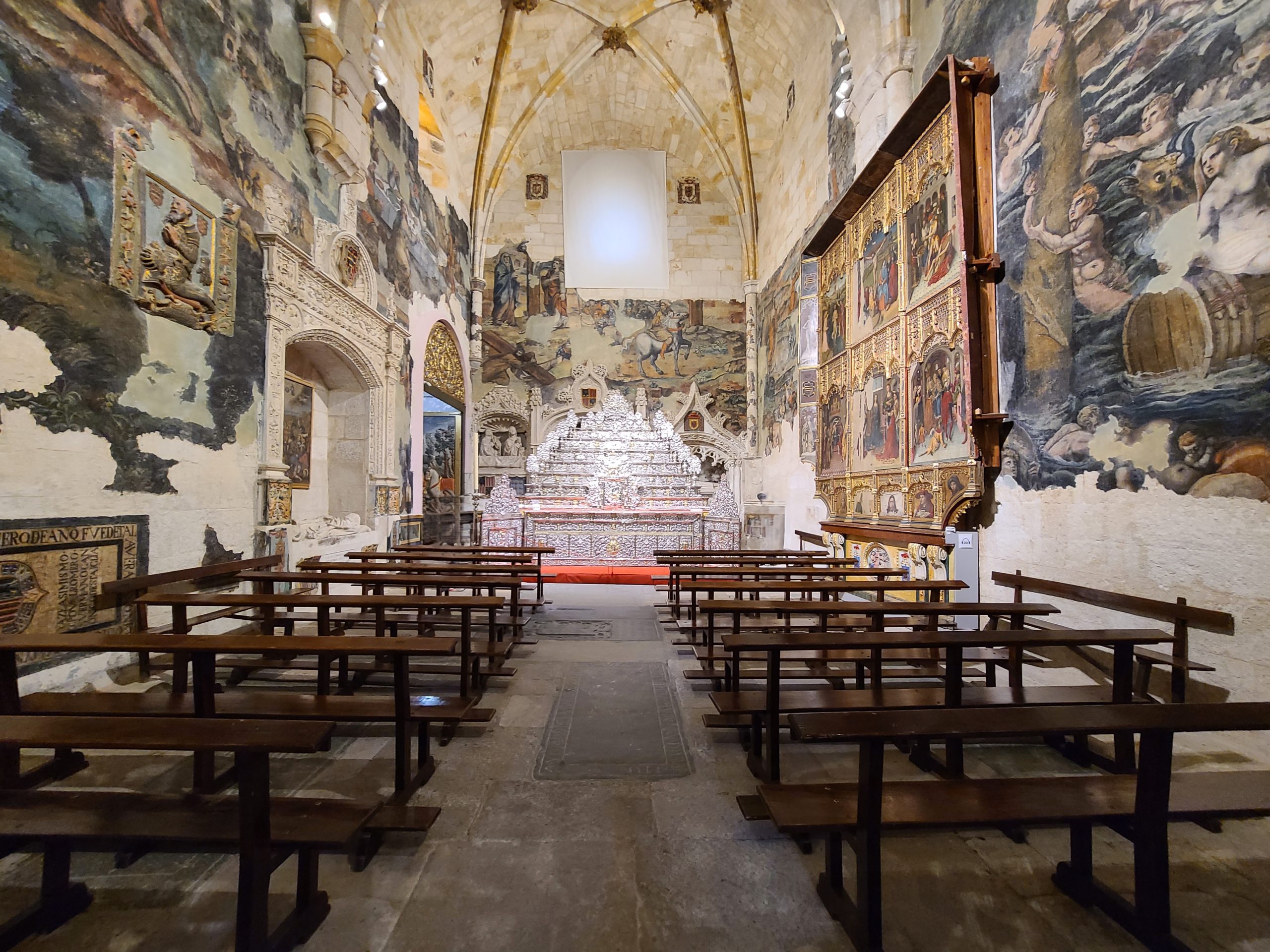From the Cathedral Square you can see the smallest and oldest of the eleven cathedrals of the Community of Castilla y León. Dedicated to the Savior, it is located at the highest point of the city of Zamora and belongs to the so-called Romanesque of the Duero. In 1889 it was declared a National Monument. Regarding the dates of the beginning and end of the works of the cathedral, there is no agreement among historians. It is said that it was built by a single master and that it was finished in 1174, coinciding with the reign of Alfonso VII.
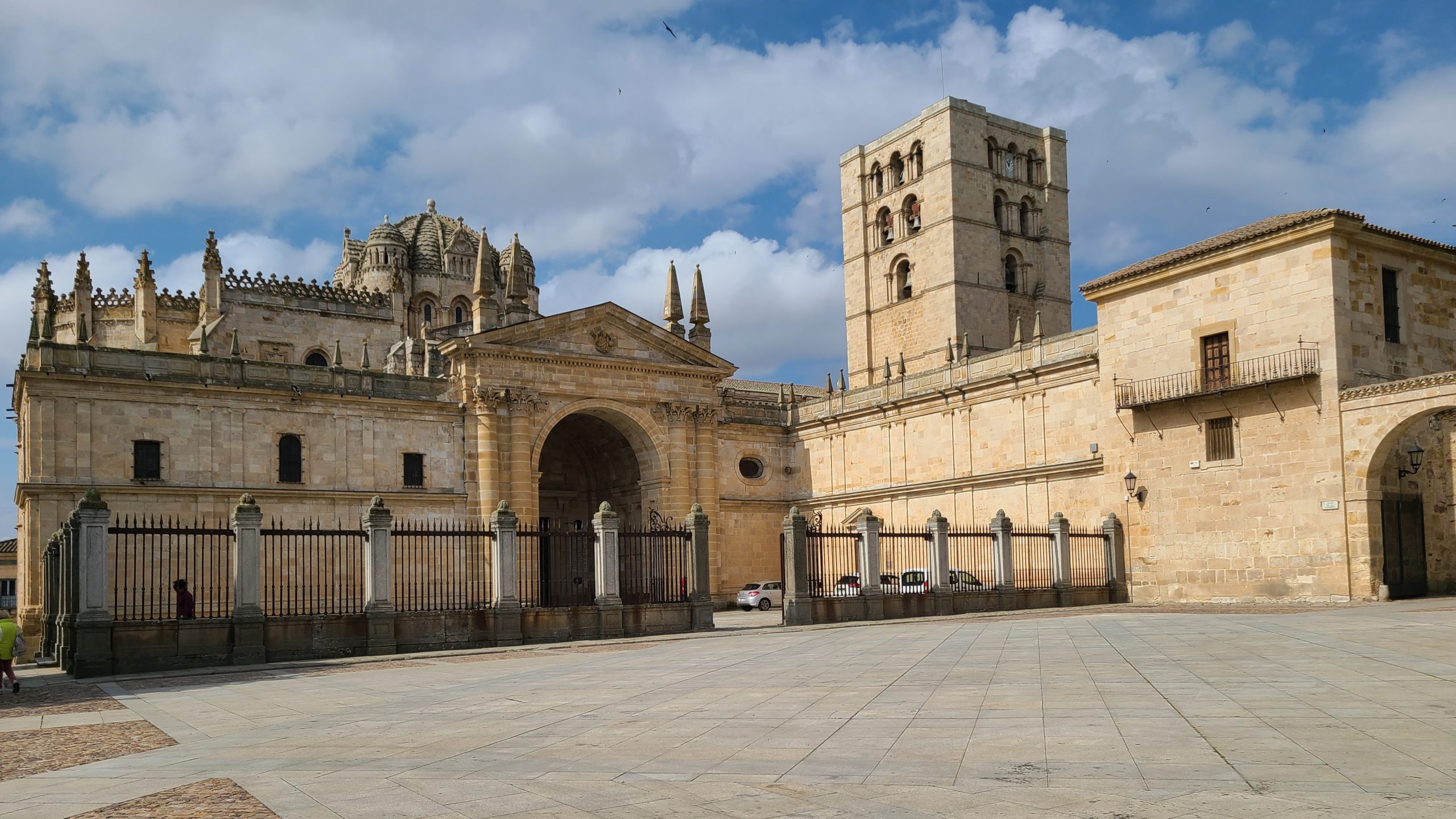
When we stop in front of the Cathedral of Zamora, two of the three elements that distinguish it stand out, its Byzantine-influenced dome and its Tower of the Savior.
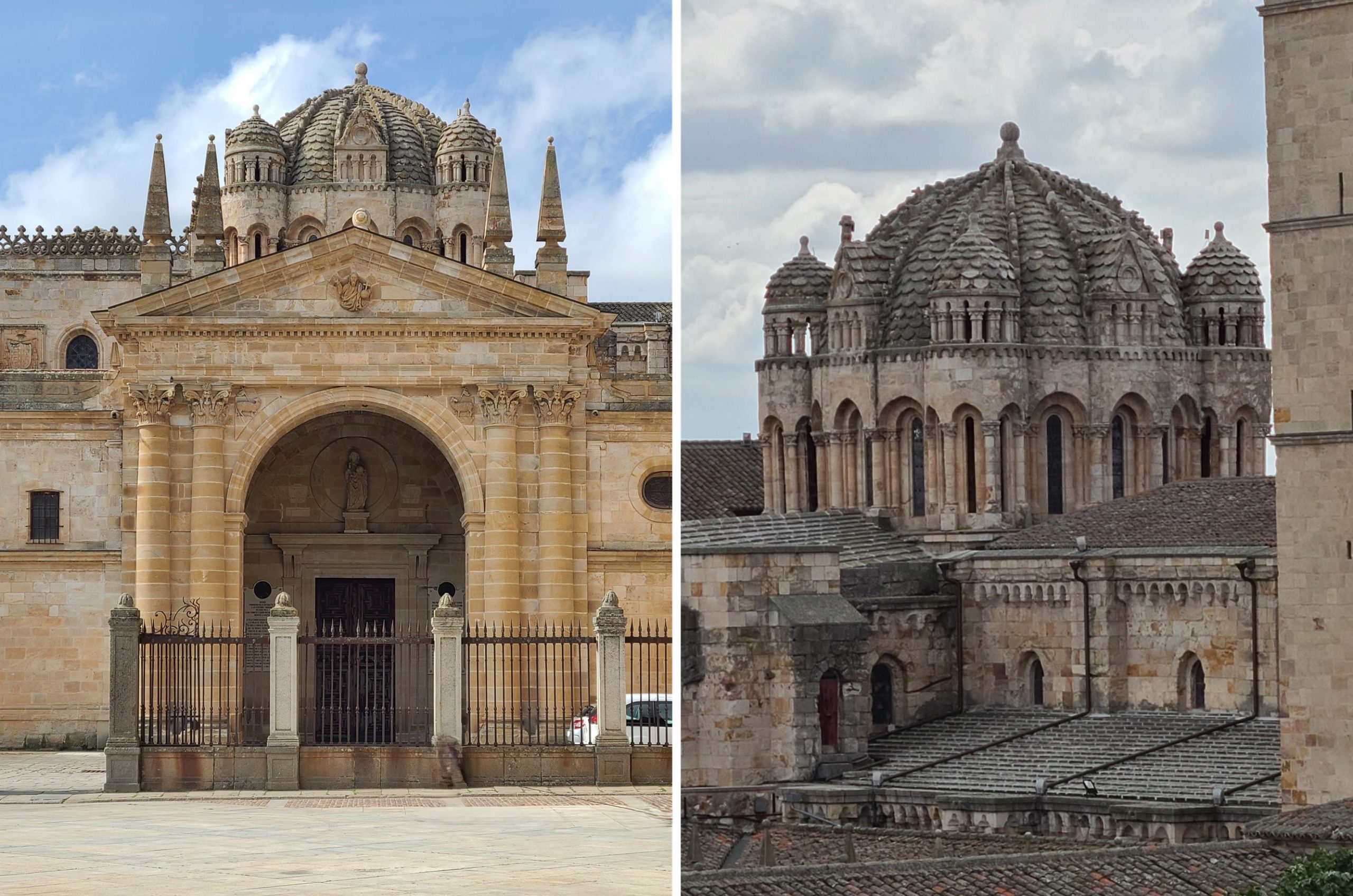
The dome of the Cathedral of Zamora heads the group of Duero dome towers, also known as Leonese dome towers or even Byzantine-Leonese dome towers. It is considered the oldest, serving as a model for the cimborrios of the Old Cathedral of Salamanca, the Colegiata of Toro and the Old Cathedral of Plasencia. Built during the period of transition from Romanesque to Gothic in the geographic limits of the Kingdom of León, these cimborrios are characterized by their French and Lombard influence, adorned with decoration of scales and balls. The dome of the Cathedral of Zamora is raised with four angular towers, in addition to columns, blind arches and capitals that make it an element of great beauty for this cathedral.

The Tower of the Savior of the Cathedral of Zamora is 45 meters high and was built during the 13th century, although the style is Romanesque. The belfry of the tower has a wide floor plan, of somewhat later construction. Along with the dome, the Bishop’s Gate, on the south façade, is perhaps the most valuable piece of the Cathedral.

The interior of the Cathedral of Zamora is a marvel. It has a Latin cross plan with three naves, originally with three apses, which were replaced in the 15th century by the current Gothic style. It has a main chapel, choir, eight chapels, cloister, cathedral museum, choir loft, chapter house, among others.

It is worth visiting the Cathedral Museum to enjoy the collection of tapestries, which is spectacular and one of the attractions of this temple.
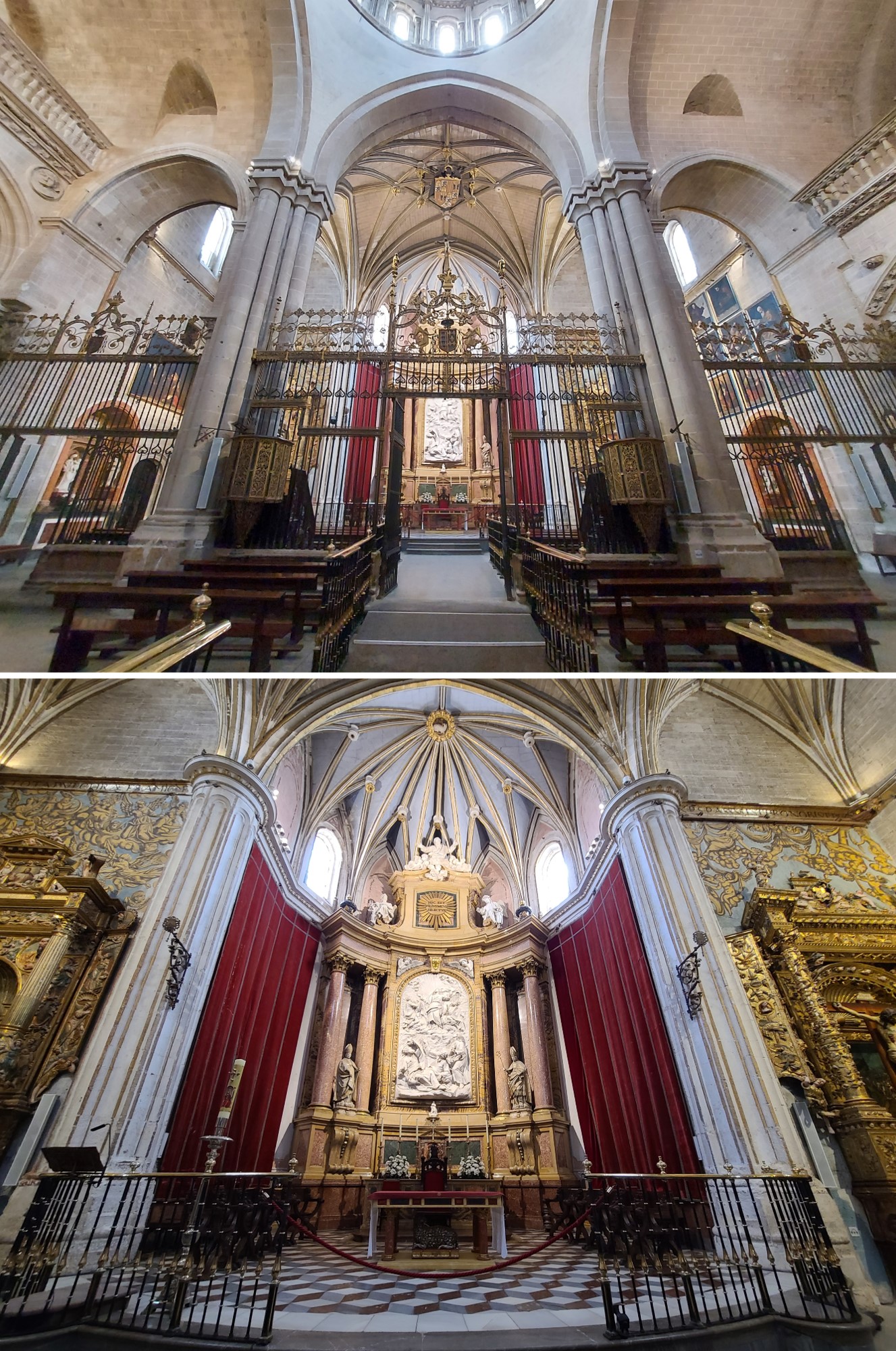
The Main Chapel is elaborated with a starry ribbed vault, today practically covered by a large coat of arms of Charles V. Just below is the Main Altarpiece, a jewel of neoclassical style composed of a pedestal with Corinthian columns guarded by the statues of San Ildefonso and San Atilano.
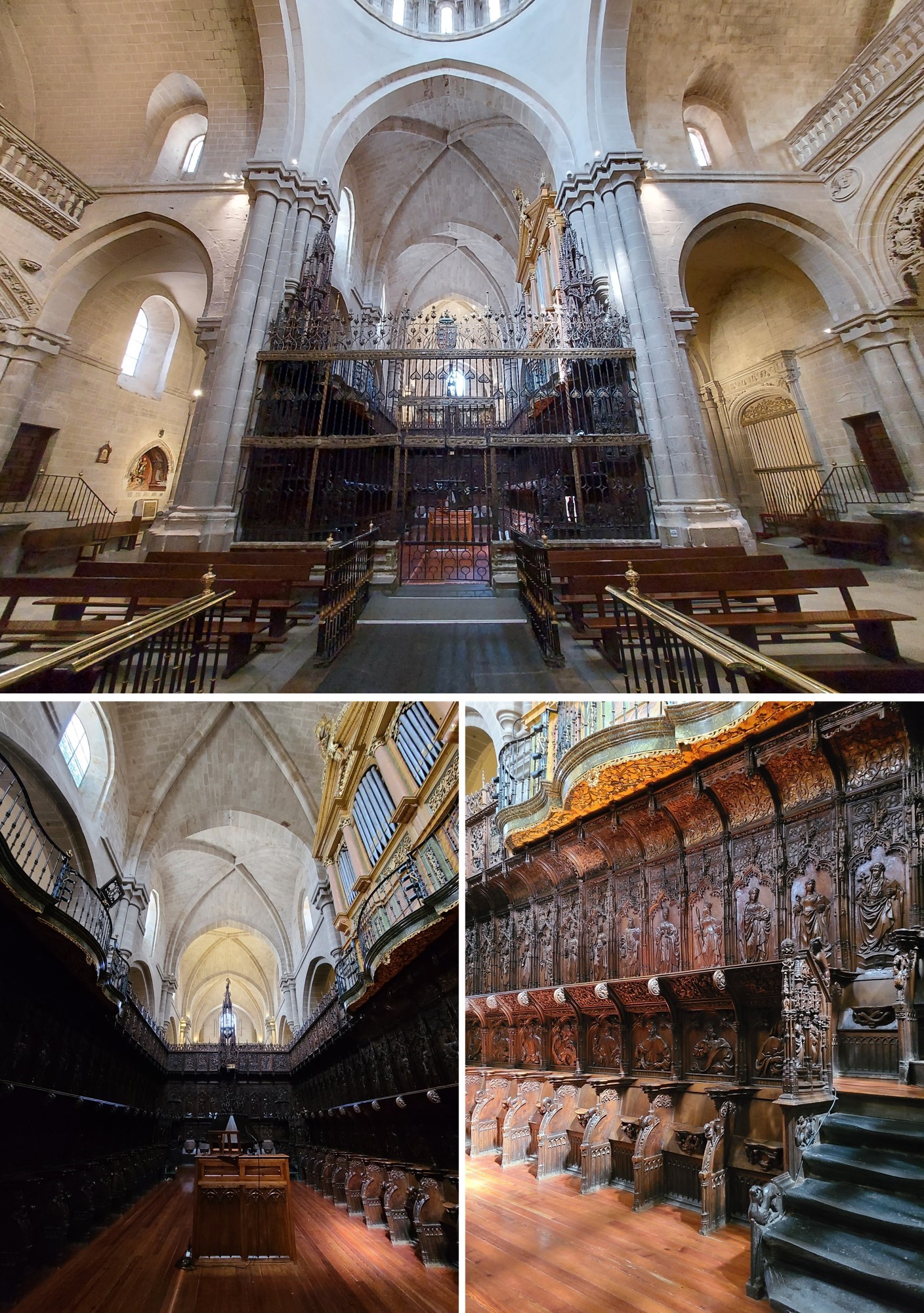
The Choir was built between 1512 and 1516, by Juan de Bruselas and, after the Cimborrio, it is said to be the part of the Cathedral that most scholars, curious and connoisseurs have been interested in over the centuries. It is U-shaped, divided into two floors and has a total of 85 seats. Its stalls stand out for the abundance of profane themes: scenes based on fables, proverbs, sayings, mythology and everyday life. The Gothic grille that closes it is simple, but at the same time, grandiose, because it has an extraordinary quality.
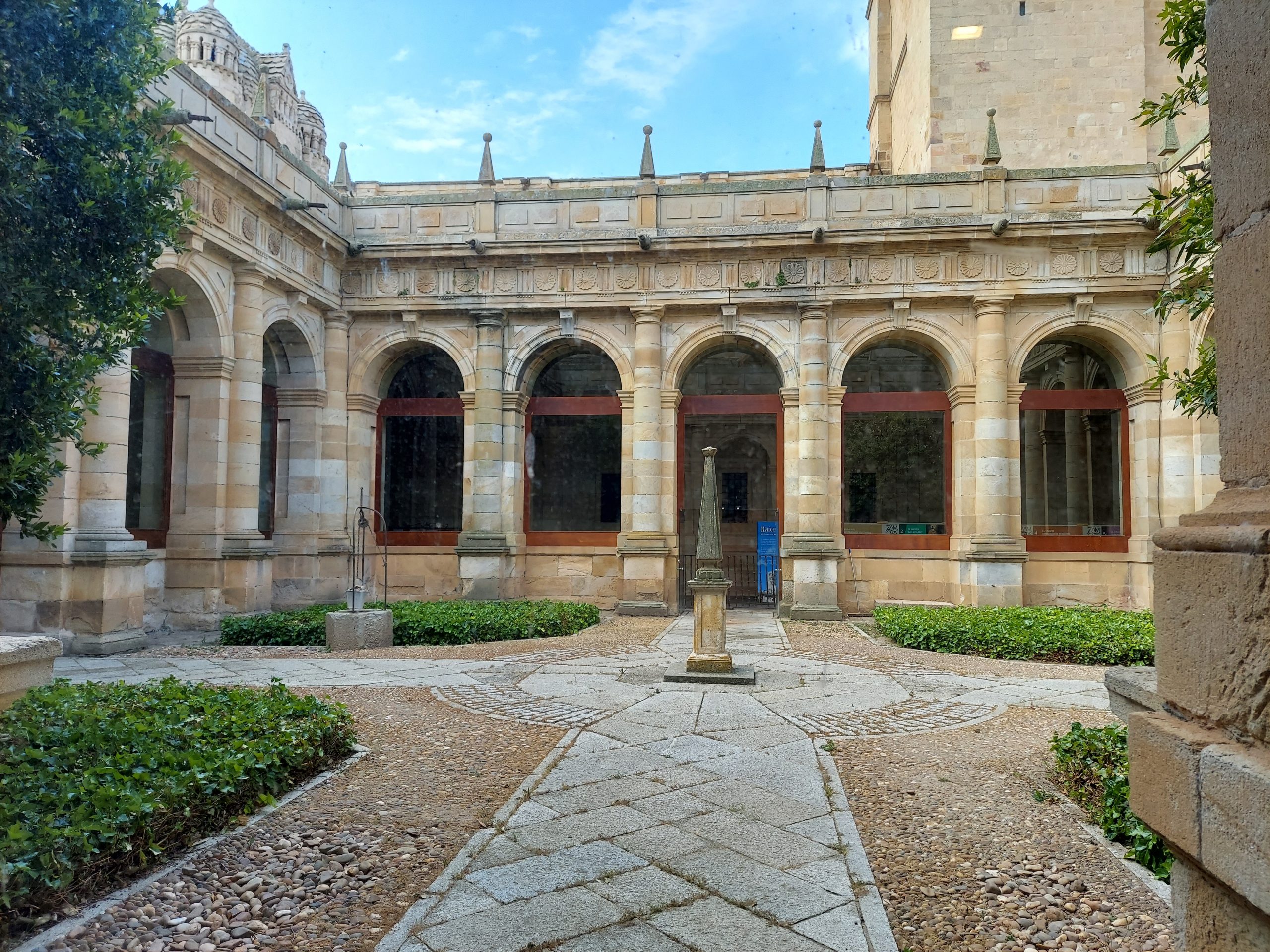
Nothing remains of the original cloister, since it was destroyed in the fire that destroyed the Cathedral in 1591. The new cloister was designed by Juan del Ribero Rada in the Herrerian style. It is composed of four naves that surround a courtyard through five semicircular arches. It is characterized by its sobriety and lack of ornamentation. The Cathedral Museum is accessed from the cloister.
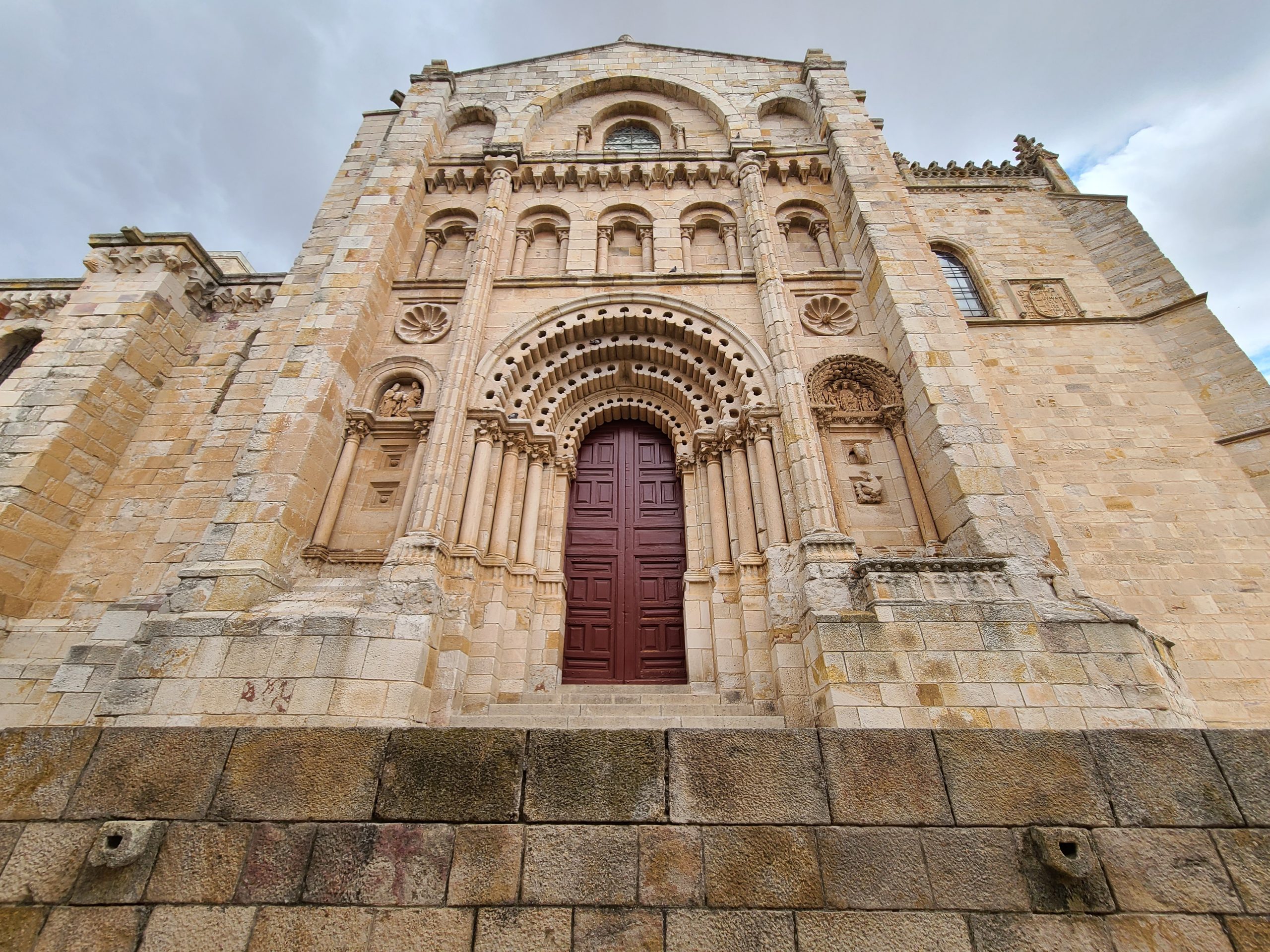
The Bishop’s Door is the only one of the three Romanesque doorways of the Cathedral of the Savior that has survived to the present day. Along with the dome, it is the most valuable piece of all the Romanesque of the Cathedral of Zamora, being an example of architectural decoration, with very little sculpture. It is located in front of the Episcopal Palace, that is why it is known as the Bishop’s Gate. Its construction corresponds to the main phase of construction of the cathedral, at the end of the 12th century. It integrates various classical decorative elements.
